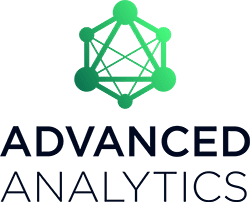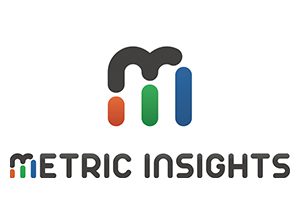
Looking ahead to the new year, we’ve identified seven trends in enterprise storage for 2024. In part one, we’ll define and explore the first four trends. The remaining three trends will be the focus of part two. This information will help equip you to prioritize and be successful in the new year.
Trend: Freeing up money from storage for AI and other critical IT projects
Dramatically reducing the costs of enterprise storage frees up IT budget to fund other significant new projects, such as AI projects, cybersecurity-related projects, or other strategic activities. This trend for 2024 will play a pivotal role in enterprises where there will be pressure to accelerate AI projects for the next stage of digital transformation, as well as to improve cybersecurity against more sophisticated AI-driven cyberattacks. With IT budgets projected by Gartner to grow by 8% in 2024, funding for these new projects will need to come from somewhere.
A smart approach to shifting IT spending internally that is taking hold is to remove costs from storage, while simultaneously improving storage. It sounds like a paradox at first sight, but the trend in 2024 will be to take advantage of three key factors that make this “paradox” an actual reality: (1) storage consolidation onto a single, scalable high availability and high performance platform, (2) autonomous automation, and (3) pay-as-you-go, flexible consumption models for hybrid cloud (private cloud and public cloud) implementations of storage.
Storage consolidation, for example, replaces 20 storage arrays with one or two storage arrays that can scale into the multi-petabyte range with 100% availability guaranteed. Having fewer arrays immediately lowers costs in terms of IT resource and storage management, power, cooling, and space. This cost savings can be used for critical IT projects.
Autonomous automation simplifies storage, intelligently automating processes and how to handle applications and workloads. Virtually no human intervention is needed. The storage systems run themselves, enabling a set-it-and-forget-it mode of operations. IT staff can focus on more value-adding activities and building AI capabilities into the infrastructure and across the enterprise.
Leveraging flexible consumption models to pay for storage, as needed and as efficiently as possible, lowers CAPEX and OPEX, freeing up money for these other IT projects. An extension of this trend is also to invest in enterprise storage solutions that deliver an ROI in one year or less, optimizing the budget.
Trend: Triple play of cyber resiliency, detection, and recovery to create an overall corporate cybersecurity strategy
The convergence of cyber resilience, detection, and recovery on a single storage platform is fueling a trend for 2024 around higher levels of cybersecurity for enterprise storage. Reliance solely on backup is no longer enough to secure storage systems. Primary storage has become a main target of cybercriminals for the most insidious and hard-to-detect ransomware and malware attacks that wreak costly havoc on enterprises.
Combining resilience (the ability to instill defensive security measures to repel attacks), detection (the ability to know when data is corrupted and whether a known good copy of data is free of ransomware or malware), and recovery (the ability to bounce back) from cyberattacks is the key to hardening storage infrastructure.
This trend to better secure storage systems is highly important because of the continued exponential increase in cyberattacks against enterprises of all types and in all industries. Cybercrime is predicted to grow from $8 trillion worldwide in 2023 to more than $10 trillion in 2025.
Cybercriminals attempted nearly 500 million ransomware attacks last year, marking the second-highest year ever recorded for ransomware attacks globally, and in the 2023 Fortune CEO survey of “Threats” to their companies, CEOs named cybersecurity their #2 concern. Ransomware attacks also represented 12% of breaches of critical infrastructure in the last year.
The convergence of cyber resilience, detection, and recovery on an integrated storage platform is an advancement over the past, commonly used approach of disparate tools and technologies trying to combat cyberattacks in silos. Improving the security defenses of cyber storage for enterprises eliminates the vulnerabilities of the silos.
It makes the cyber capabilities more air-tight and ensures a rapid recovery of data within minutes to thwart cybercriminals, nullifying ransom demands and preventing (or minimizing) any downtime or damage to the business. Ignoring this trend in 2024 could greatly harm an enterprise, especially one that doesn’t even know cybercriminals are lurking in their data infrastructure, no matter how good their other cybersecurity defenses are.
Trend: The blossoming of green storage
Having more storage capacity in the same form-factor and having fewer storage arrays have become part of an ongoing trend to make enterprise storage, along with data centers in general, more environmental-friendly. Fewer arrays mean less carbon footprint, less to cool with the use of coolants, and less to recycle, translating into a much lower impact on the environment.
Consolidating multiple arrays into a single storage platform means the use of less energy, fitting a strategy to advance sustainability. Storage upgrades also bring energy savings, which also translates into cost savings, in light of the rising costs of energy this year. Consolidation also means much improved, more efficient utilization of space.
With the higher cost of energy, the need to reduce floorspace costs, the drive to lower carbon emissions, and the desire to reduce the impact of recycling of storage arrays on the environment, this trend will see in the new year an increase of audits of enterprise storage infrastructure and more intense identification of inefficiencies and waste in the storage estate.
The blossoming of green storage will be demonstrated in 2024 by reduced energy consumed to power storage systems, while still protecting data. We’ll see bigger capacity systems being installed that take up less space than traditional arrays. Software-defined storage increases storage utilization and reduces overprovisioning of storage. Also, part of green storage will be managing data as part of a data lifecycle strategy for more agility and better compliance with sustainability standards.
As part of broader green IT initiatives, storage will come under greater scrutiny in 2024 to boost efficiency and conservation. Enterprises will increasingly turn to AI for the capabilities to optimize storage capacity and streamline management, resulting in more efficiency.
Gartner predicts that by 2025 half of all data centers will deploy AI/ML to increase efficiency by up to 30%. AI will also be used to optimize cooling. More enterprises that use water-based cooling systems to cool their data centers where storage systems reside will be compelled to get on a path to become “water positive,” replenishing more water than they consume. Green IT is changing the way storage administrators need to think about the future of enterprise storage.
Trend: Seamless hybrid cloud integration
The shift to hybrid cloud in the enterprise has been ongoing for years, as enterprises figured out that a balanced approach to leveraging the public cloud and maximizing on-premises private cloud data infrastructure makes the most business sense. But what is new about this trend is how dominant the hybrid cloud has become for enterprise storage.
New capabilities have made it extremely easy for enterprises to manage on-prem private cloud storage and the public cloud storage as one, integrated, software-defined infrastructure, as if the public cloud is just another “array” identified in the software’s user interface. Advancements in the past year to make managing hybrid cloud storage even simpler has unlocked the full-scale embracing of this approach to storage, especially for large enterprises.
Hybrid cloud has also become easier to scale. If a large enterprise needs to expand capacity quickly because of an unexpected burst in data traffic, it can scale fast on a single, software-defined, multi-petabyte storage system that is on-prem. It can obtain a cloud-like experience, yet leveraging its own infrastructure, without any downtime or complexity. At the heart of why hybrid cloud is so strong, and so attractive, are cost and control.
Enterprises can keep costs lower by using an on-prem storage system after storage consolidation of many arrays into one or two systems. They also don’t have to pay the hidden costs of moving data back and forth from the public cloud. They can use the public cloud for the use cases that are most appropriate, such as archived data, backup data, disaster recovery, or DevOps. Simultaneously, enterprises keep better control of their data by having it on-prem, ensuring compliance, especially with recent regulations about data governance and data privacy.
To be continued in part two.
- SEO Powered Content & PR Distribution. Get Amplified Today.
- PlatoData.Network Vertical Generative Ai. Empower Yourself. Access Here.
- PlatoAiStream. Web3 Intelligence. Knowledge Amplified. Access Here.
- PlatoESG. Carbon, CleanTech, Energy, Environment, Solar, Waste Management. Access Here.
- PlatoHealth. Biotech and Clinical Trials Intelligence. Access Here.
- Source: https://www.dataversity.net/what-trends-to-expect-in-2024-in-enterprise-storage-part-one/
- :has
- :is
- :where
- $8 Trillion
- $UP
- 1
- 20
- 2023
- 2024
- 2025
- 500
- a
- ability
- About
- accelerate
- across
- activities
- actual
- administrators
- advance
- advancement
- advancements
- ADvantage
- After
- against
- ahead
- AI
- All
- along
- also
- an
- and
- Another
- any
- applications
- approach
- appropriate
- ARE
- around
- AS
- At
- Attacks
- attempted
- attractive
- audits
- automating
- Automation
- autonomous
- availability
- back
- Backup
- Balanced
- BE
- because
- become
- been
- being
- Better
- bigger
- blossoming
- boost
- Bounce
- breaches
- bring
- broader
- budget
- Budgets
- Building
- business
- but
- by
- CAN
- capabilities
- Capacity
- carbon
- carbon emissions
- carbon footprint
- cases
- Centers
- ceo
- CEOs
- changing
- Cloud
- cloud storage
- combat
- come
- commonly
- Companies
- compelled
- complexity
- compliance
- Concern
- CONSERVATION
- consolidation
- consume
- consumed
- consumption
- continued
- control
- Convergence
- Cool
- Corporate
- corrupted
- Cost
- cost savings
- costly
- Costs
- could
- create
- critical
- Critical Infrastructure
- cyber
- cyberattacks
- cybercrime
- cybercriminals
- Cybersecurity
- damage
- data
- data centers
- data infrastructure
- data privacy
- DATAVERSITY
- defensive
- define
- deliver
- demands
- demonstrated
- deploy
- desire
- Detection
- DevOps
- digital
- Digital Transformation
- disaster
- disparate
- Doesn’t
- dominant
- Dont
- downtime
- drive
- easier
- easy
- efficiency
- efficient
- efficiently
- eliminates
- embracing
- Emissions
- enabling
- energy
- enough
- ensures
- ensuring
- Enterprise
- enterprises
- Environment
- especially
- estate
- Ether (ETH)
- Even
- EVER
- example
- Expand
- expect
- experience
- explore
- exponential
- extension
- extremely
- factors
- FAST
- fewer
- figured
- First
- fitting
- flexible
- Focus
- Footprint
- For
- forth
- Fortune
- four
- Free
- from
- full-scale
- fund
- funding
- future
- Gartner
- General
- get
- Globally
- good
- governance
- greater
- greatly
- Green
- Grow
- guaranteed
- Half
- handle
- harm
- Have
- having
- Heart
- help
- Hidden
- High
- higher
- highly
- hold
- How
- How To
- HTTPS
- human
- Hybrid
- hybrid cloud
- Identification
- identified
- if
- immediately
- Impact
- implementations
- important
- improve
- improved
- improving
- in
- Increase
- Increases
- increasingly
- industries
- inefficiencies
- information
- Infrastructure
- initiatives
- instill
- integrated
- Interface
- internally
- intervention
- into
- Invest
- IT
- ITS
- jpg
- just
- Keep
- Key
- Know
- known
- large
- Large enterprises
- Last
- Last Year
- less
- levels
- leveraging
- lifecycle
- light
- like
- longer
- lower
- made
- Main
- make
- MAKES
- malware
- manage
- management
- managing
- many
- marking
- Matter
- maximizing
- mean
- means
- measures
- million
- minimizing
- minutes
- Mode
- models
- money
- more
- more efficient
- most
- moving
- much
- multiple
- Named
- nearly
- Need
- needed
- needs
- New
- new year
- next
- no
- obtain
- of
- on
- ONE
- ongoing
- Operations
- Optimize
- optimizing
- or
- Other
- out
- over
- overall
- own
- Paradox
- part
- past
- path
- Pay
- performance
- pivotal
- platform
- plato
- Plato Data Intelligence
- PlatoData
- Play
- positive
- possible
- power
- predicted
- Predicts
- pressure
- preventing
- primary
- Prioritize
- privacy
- private
- processes
- projected
- projects
- protecting
- public
- Public cloud
- quickly
- range
- Ransom
- ransomware
- Ransomware Attacks
- rapid
- Reality
- recent
- recorded
- recovery
- recycling
- reduce
- Reduced
- reduces
- reducing
- regulations
- reliance
- remaining
- remove
- represented
- resilience
- resource
- resulting
- rising
- ROI
- Role
- Run
- same
- Savings
- scalable
- Scale
- scrutiny
- seamless
- secure
- security
- Security Measures
- see
- sense
- seven
- shift
- SHIFTING
- Sight
- significant
- silos
- simpler
- simplifies
- simultaneously
- single
- smart
- So
- solely
- Solutions
- somewhere
- sophisticated
- Space
- Spending
- Staff
- Stage
- standards
- Still
- storage
- Strategic
- Strategy
- streamline
- strong
- successful
- such
- Survey
- Sustainability
- system
- Systems
- Take
- taking
- Target
- Technologies
- terms
- than
- that
- The
- The Future
- their
- themselves
- There.
- These
- they
- think
- this
- this year
- three
- to
- tools
- traditional
- traffic
- Transformation
- Trend
- Trends
- Trillion
- Triple
- trying
- TURN
- two
- types
- under
- Unexpected
- upgrades
- use
- used
- User
- User Interface
- using
- virtually
- Vulnerabilities
- Waste
- Water
- Way..
- WELL
- What
- What is
- when
- whether
- which
- while
- why
- will
- with
- within
- without
- worldwide
- year
- years
- yet
- you
- zephyrnet












